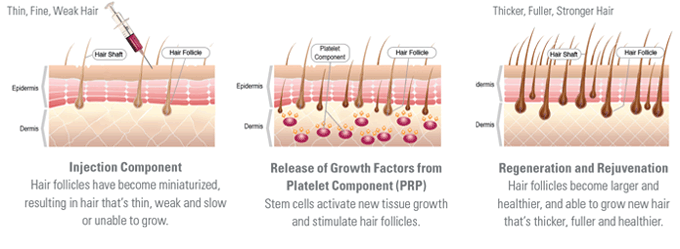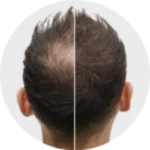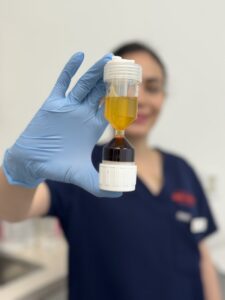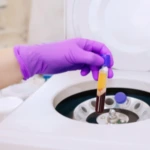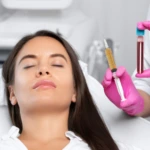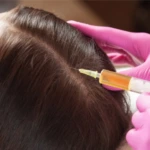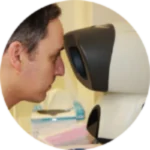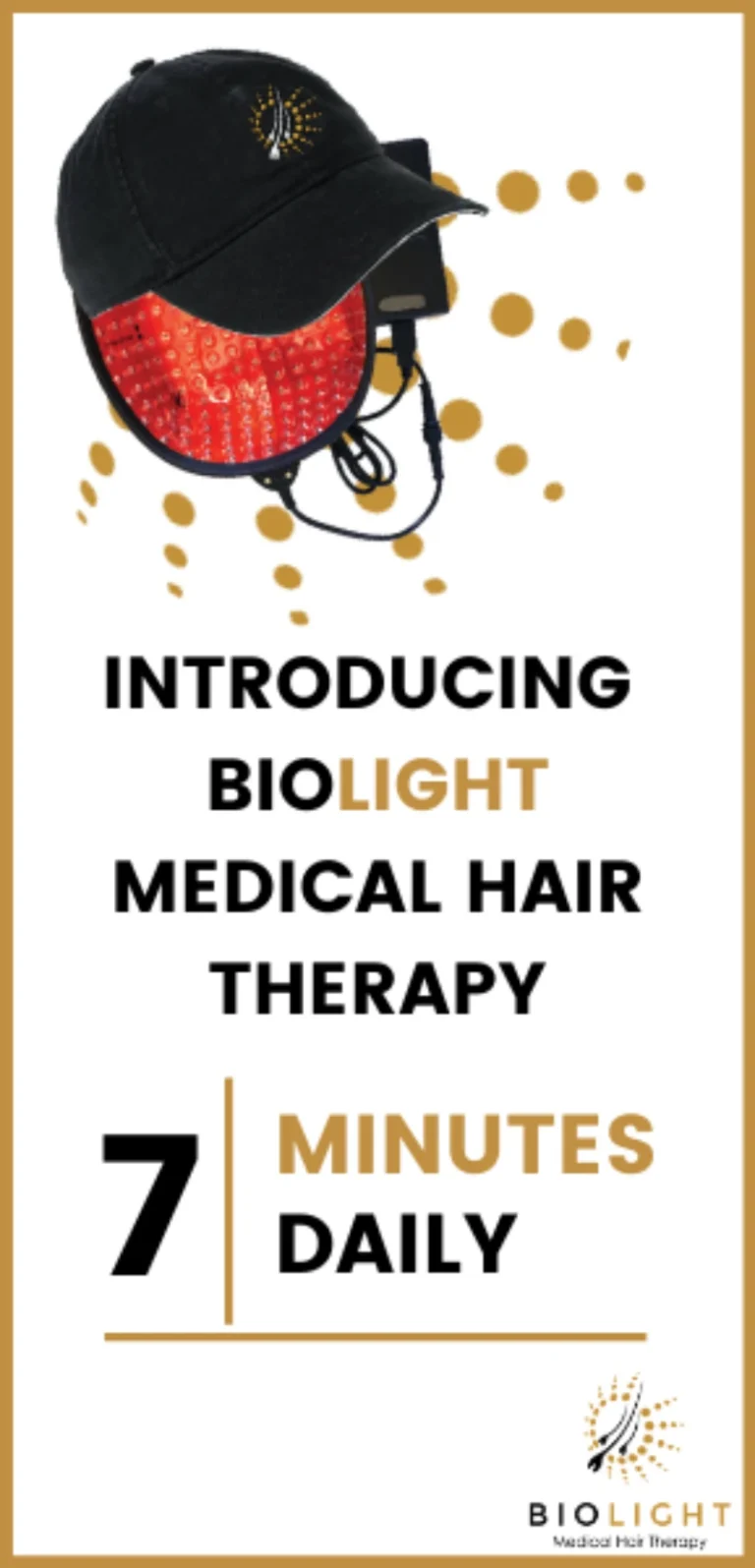What is PRP?
Platelet Rich Plasma, or PRP, is a high concentration of platelets contained in a small volume of plasma from your own blood. Platelets are the components of your blood that release various prp with growth factors for hair that initiate your body’s healing cascade. The idea behind this prp treatment for hair growth is that the platelet-rich plasma obtained from the blood contains growth factors that can stimulate hair follicles, increase blood supply to the scalp, and thicken the hair shaft.
The Process of PRP Therapy
PRP therapy is typically performed in three steps, with each treatment spaced 4-6 weeks apart. Maintenance treatments are then required every 4-6 months to maintain the results. Let’s take a closer look at each step of the process:
Step 1: Blood Draw and Centrifugation
The first step of PRP therapy involves drawing a patient’s blood, usually from their arm. The blood is then placed in a centrifuge, a machine that rapidly spins to separate fluids of different densities. After approximately 10 minutes in the centrifuge, the blood separates into three layers: platelet-poor plasma, platelet-rich plasma, and red blood cells.
Step 2: Platelet-rich plasma Extraction
The platelet-rich plasma layer, which contains a higher concentration of platelets and growth factors, is carefully drawn up into a syringe. This platelet-rich plasma is the key component used in the subsequent injection into the scalp.
Step 3: Injection into the Scalp
The final step of PRP therapy is the injection of the platelet-rich plasma into areas of the scalp that require increased hair growth. The injection process aims to deliver the growth factors directly to the hair follicles, stimulating their activity and promoting Platelet Rich Plasma for hair growth.
The Plasma Hair Treatment Cost for Hair Loss
The PRP for hair cost therapy can vary depending on several factors, including geographic location, the quality of equipment used, and the addition of nutritive components. Generally, the initial three treatments range from $1,500 to $3,500, with each subsequent maintenance treatment costing around $400 or more.
It’s important to note that many insurance plans consider PRP therapy for PRP for hair loss women to be a cosmetic procedure and may not cover the costs. However, it is always advisable to check with your insurance provider to determine if any coverage is available for you.
Who uses PRP?
Almost anyone with hair thinning or hair loss can be a good candidate for PRP. For some, PRP is used in conjunction with other hair restoration modalities, such as medication or surgery, as a means of being more “aggressive” with treatment. PRP is especially useful for those who are not candidates for surgery or who want to try non-surgical approaches before considering surgery.
Lastly, a “PRP soak” at the time of hair transplant surgery may increase the viability of your grafts, speed healing, reduce redness, and decrease the possibility of “shock loss”.
What are the benefits of PRP?
The main benefit of PRP is thought to be the production of new blood vessels, which helps support the activity of hair follicles, promoting growth of stronger, healthier hairs. Studies have shown that PRP can increase the density of your hair, as well as making individual hairs thicker. In addition, PRP can increase the anagen, or growing phase, of your hair. Combined, these benefits result in the appearance of thicker, denser hair with less shedding.





